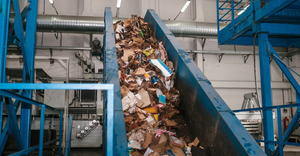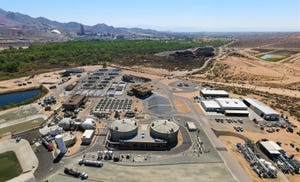From the World’s Breadbasket to the Garbage Can: The Need for Food Waste Recovery
Last week, the House Agriculture Committee held the first-ever Congressional hearing focused on the problem of food waste in America. Representatives from national trade organizations and advocacy groups were among those who testified.
The hearing followed closely on the heels of two newly introduced pieces of legislation. The Food Recovery Act offers tax incentives and financial support to facilitate the storage, transport and distribution of surplus wholesome foods to organizations that serve people who are food insecure. The Food Date Labeling Act aims to eliminate confusion, simplify regulatory compliance for companies, and decrease wasted food and money by standardizing the criteria for food expiration labeling in the United States.
Food loss (what occurs at the point of production, in the fields) and its subcategory food waste (what occurs once food enters the marketplace) have progressively increased from about 30 percent of the available food supply in 1974 to almost 40 percent in recent years. How it is measured, by weight (physical amount), by economics (dollar value), or by energy (caloric value), frames different discussions and conclusions. Food waste is now one of the largest proportional components by weight of the evolving ton of municipal waste. Naturally, as recyclers, we support food waste prevention and recovery efforts. As an industry, for the unrecoverable portion, we ponder whether food waste should be fed to hogs, sent to a commercial digester, a compost facility or disposed. After all, collecting, transporting recovering and processing waste is what we do.
The need is simple to understand. We must ensure adequate nutrition to each person who inhabits the earth. The broader issue of food production and loss is much more complex. It includes agribusiness, technology, politics, behavioral hurdles, health, economics and more. These issues may seem to transcend our industry. However, our niche in prevention and recovery is seen as vital in a multi pronged approach aimed at arresting this growing global condition before it has catastrophic effects.
The connection of hunger to civil unrest is well documented. Which one follows the other is dependent on local conditions. Any number of revolutionaries have been credited with claiming that every society is just three square meals away from anarchy. Lord Ewen Cameron, a member of the British House of Lords, has offered a contemporary view. He estimates the timeframe from the appearance of food insecurities to the onset of rioting/looting is three days, or the equivalent of missing nine meals. As confirmation, analysts point to the desperate actions of folks in New Orleans post Katrina, due in part to the ineffectiveness of FEMA in addressing the conditions.
Cameron postulates that in a global economy even First World countries are vulnerable to the domino effect of seemingly unrelated incidents. These can spark supply chain spikes and volatilities, much like we have experienced in the recycling commodities market. When food is the affected commodity, developing nations are hit even harder because it already represents a significant percentage of their household income. Therein lies the fear of rapidly escalating tensions
Lord Cameron’s theory is a sobering thought in light of predictions from organizations currently analyzing the situation. By 2050, the United Nations’ Food and Agriculture Organization (FAO) estimates over 9 billion people will inhabit the planet, which is roughly 2 billion more than today. FAO speculates that worldwide demand for food will increase by over 60 percent of current production capabilities where 795 million people already go hungry each day,
For the last 300 years, farming, more accurately agribusiness, has expanded its footprint dramatically. Not only do we farm more land, primarily in the northern hemisphere, but we have increasingly produced more food per acre. In the United States, we have increased the average yield per acre for wheat, corn, and soybeans by four to six times what was produced at the beginning of the 20th century.
Of course, the success of agribusiness comes at a high price. The impacts are not all positive. It is a very energy intensive industry when the logistics of getting food to market are considered. Large corporate farms are reliant on the consumption of high volumes of water, the use of chemical fertilizers and pesticides.
High performance rightfully earned us bragging rights as the “Breadbasket of the World,” not only from yield, but also our willingness to distribute the bounty for urgent needs. But times are changing. China, South America and Africa are emerging as agricultural powers with different political views. Their approach on world hunger is yet to be seen.
Drought and other weather related conditions are already moving our “golden waves of grain” from Kansas and Nebraska into North Dakota and Canada. In fact, we are nearing the time when we will have pushed as far north into Canada as possible. Consequently, by 2050, researchers predict US yields could fall by as much as 25 percent. The global market will feel the pain since the US Midwest is the largest provider of globally traded corn and soybeans. This decrease will come just as the population is peaking.
That is just the tip of the iceberg, the Joint Task Force on Extreme Weather and Global Food System Resilience anticipates climate change and related catastrophic events will continue to compromise food availability not only during production but through service interruptions in the overall supply chain.
Sadly, most of the food we waste in our homes results from misunderstood labeling, and over purchasing. To understand the immensity of the potential losses, consider this. Approximately 23 percent of all homes in the US have two or more refrigerators with a total capacity of 60 to 70 cubic feet stocked with perishable foods and forgotten purchases. 40 percent of the food will remain uneaten and discarded, some before its time. Just a 15% reduction in food waste in the U.S. could feed 25 million Americans. The Food Waste Recovery Act and the Food Date Labeling Act are worth consideration for that reason alone.
Michele Nestor is the President of Nestor Resources Inc., based in the Greater Pittsburgh area, and chair of the board of directors, of the Pennsylvania Recycling Markets Center, Penn State, Harrisburg. She helps private and public sector organizations develop strategic plans to survive in a transitioning marketplace.
About the Author
You May Also Like


